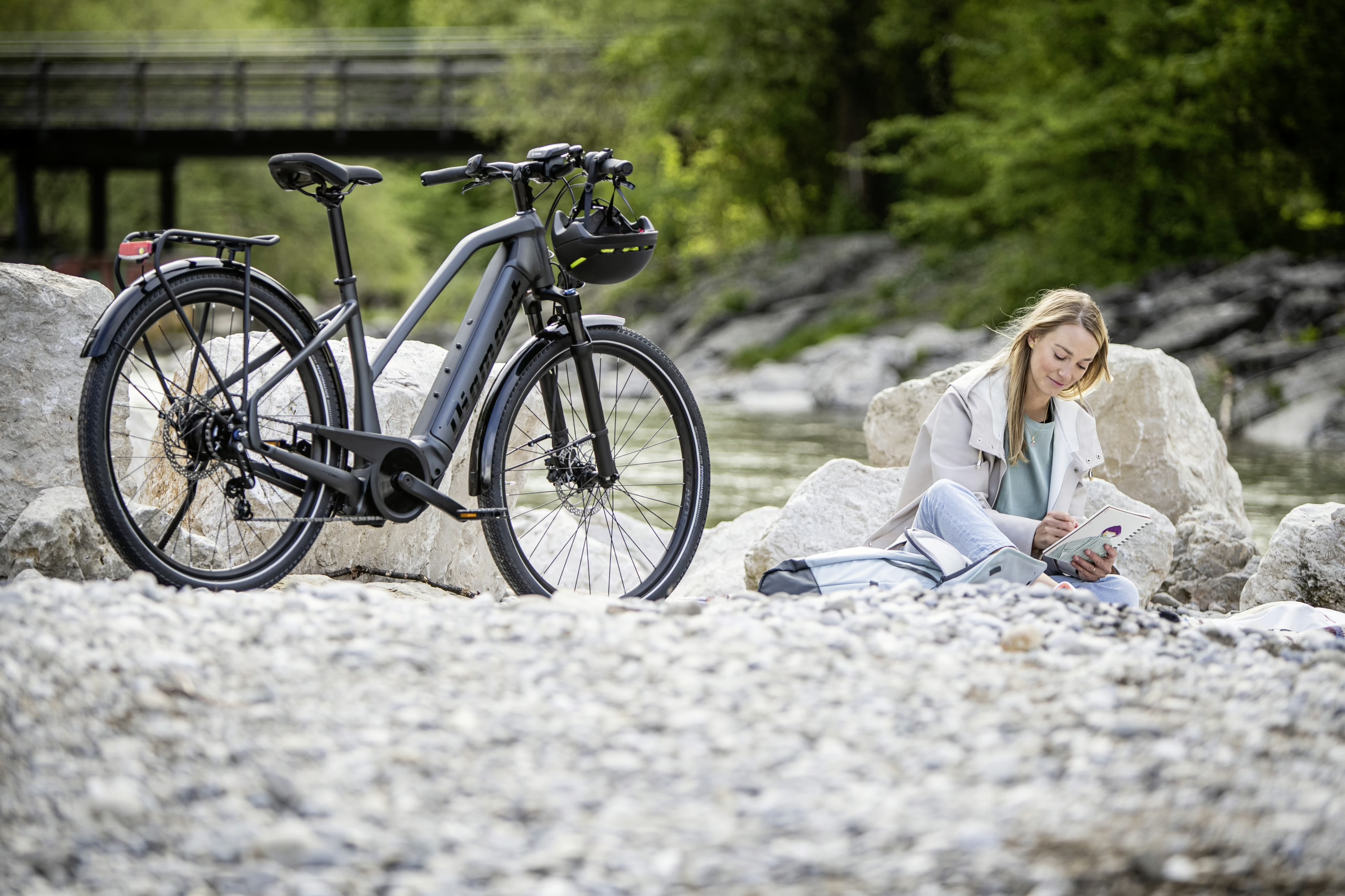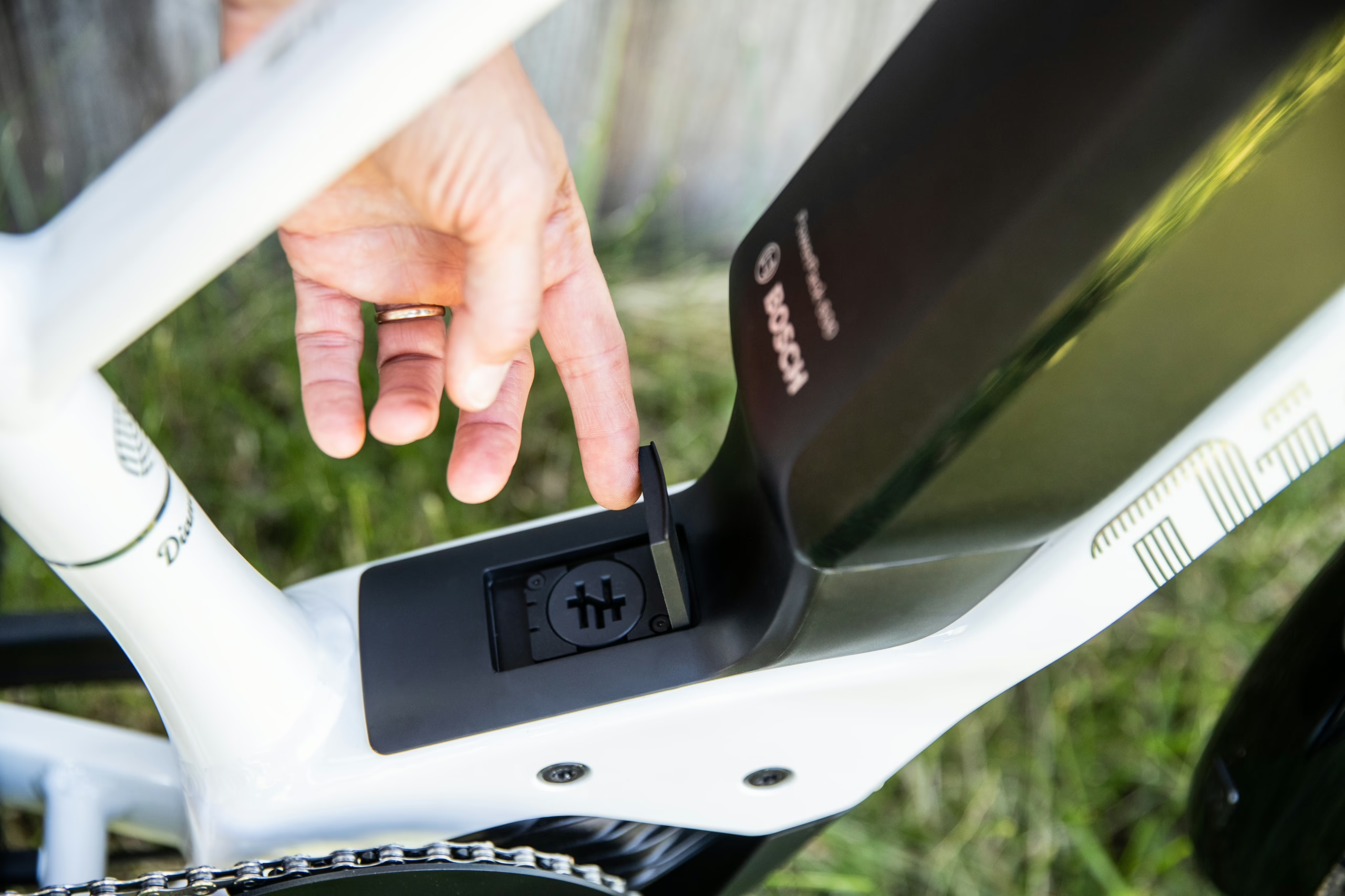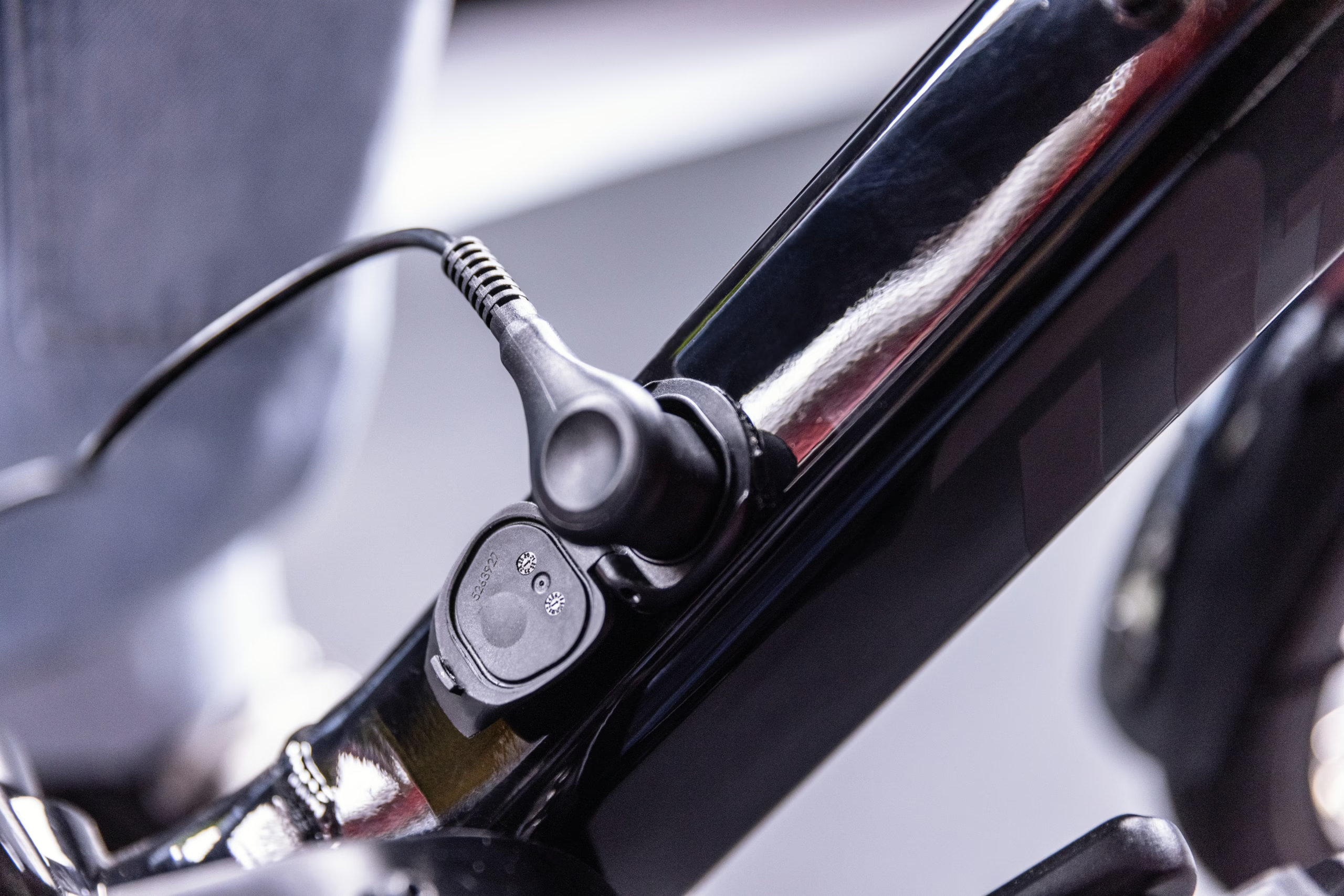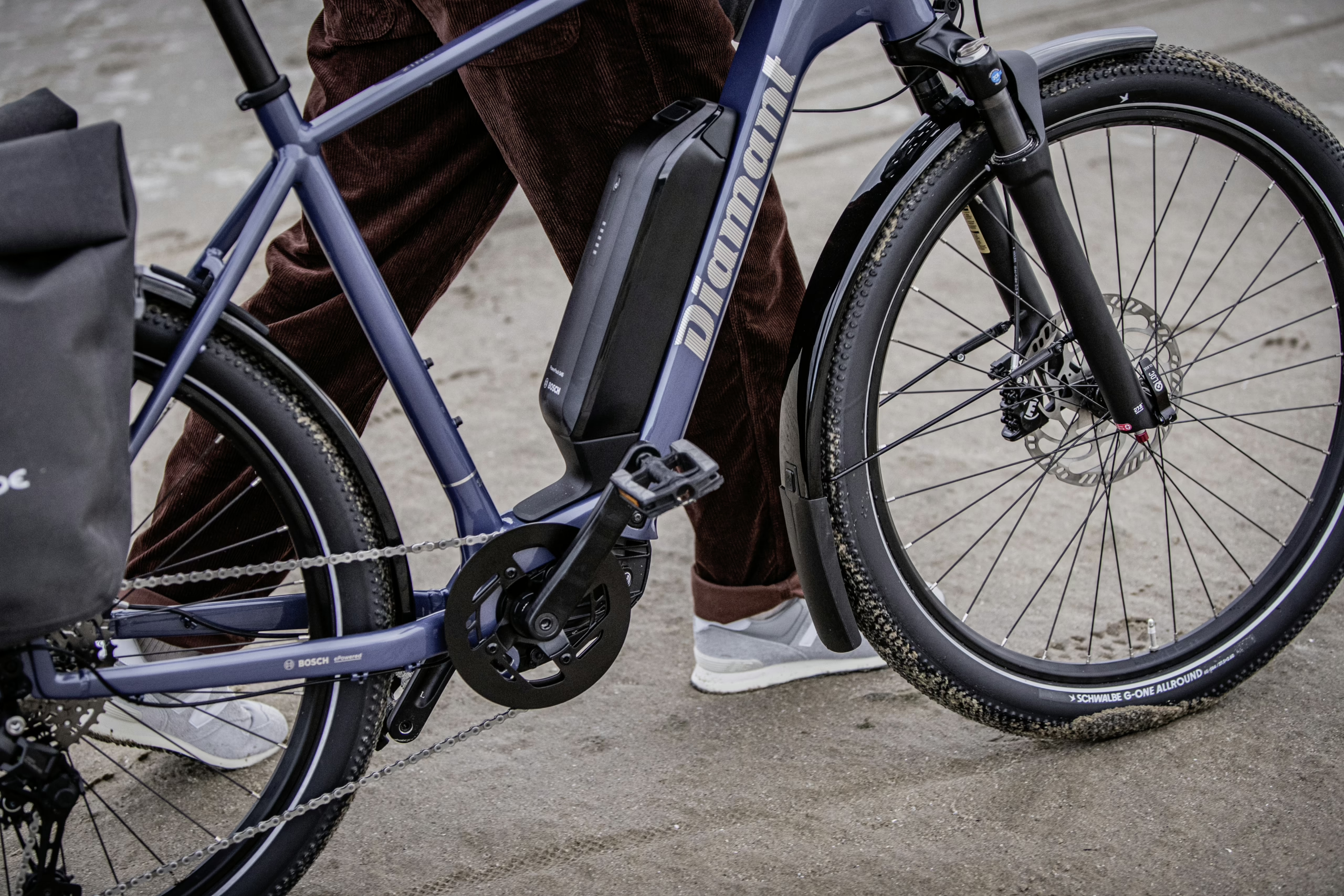
E-bike battery FAQ
All about bicycle batteries
The e-bike battery is the energy supplier of an electric bike. Because the performance of an e-bike stands and falls with it, many questions arise about the battery before the purchase: How many charging processes are possible? How far does a battery charge last? What do I need to consider in winter?
Our guides give you an overview of everything you need (or want) to know about your e-bike battery.

E-bike battery production and sustainability
Armin Harttig from Bosch eBike Systems explains in an interview how sustainable an e-bike battery is.

E-bike battery service life
All information on the service life of e-bike batteries and helpful tips for gentle handling.

Charging an e-bike battery
How do I charge my e-bike battery correctly and what do I need to bear in mind? Everything you need to know in this article.

Storing and caring for an e-bike battery
We give you the most important tips for storing and caring for your e-bike battery.

How safe are e-bike batteries?
There are a few points to consider for the safe handling of E-bike batteries. Our tips for optimum safety.

Winter care for e-bike batteries
We’ll tell you how to keep your e-bike battery in optimum condition in winter despite the cold.
Background information: The different bike battery types
E-bike batteries can be differentiated in terms of their materials and positioning. There are four different types of e-bike battery: the lithium-ion battery (Li-ion), the nickel-cadmium battery (NiCd), the nickel-metal hydride battery (NiMH) and the lead-acid battery. The most common – and used on Diamant e-bikes – is the lithium-ion battery. These are more durable and lighter than the other battery types. There are also different bike batteries in terms of their position on or in the bike:
- Frame batteries
- Integrated batteries
- Rack batteries
- Dual battery (A combination of two batteries)
- Range Extender (An addition to the main battery in the form of a water bottle)
Which position is the best for e-bike batteries
There is no such thing as the “best” position for an e-bike battery. The position has various advantages and effects on driving behaviour.
An e-bike battery on the luggage rack is visually very inconspicuous. Another advantage is the easy removal and dismantling. And it doesn’t get dirty as quickly as a frame battery – after all, it is better protected from splash water due to its position. However, the centre of gravity of the bike is shifted further to the rear.
Many frame batteries are located on the down tube (in this case also known as the down tube battery). This ensures a stable position and natural weight distribution. Intube batteries can save weight due to their design. The weight distribution and low centre of gravity of classic frame batteries are also advantages here.
Instrucitons: Remove the e-bike battery
To transport or clean your e-bike, it is necessary to remove or dismantle the bike battery. The procedure differs slightly depending on the model, but the basic steps are always the same:
- If present, open the frame cover.
- Unlock the lock with the key. This causes the battery to fall into the retention fuse.
- Depending on the model, tilt the battery out of the upper holder and hold it firmly with your hand.
- Pull the battery out of the frame.
For luggage rack batteries, also unlock the lock with the key. Pull the battery out of the holder. It is just as easy and intuitive to reinsert batteries in reverse order. You can feel and hear the battery click into its holder and it sits firmly in the frame or on the e-bike.
All PowerPacks are equipped with an ergonomic carrying handle, which makes handling very easy. The PowerTube drops about 2 cm out of the frame when unlocked, making it easier to grip. A safety mechanism prevents the battery from falling out.